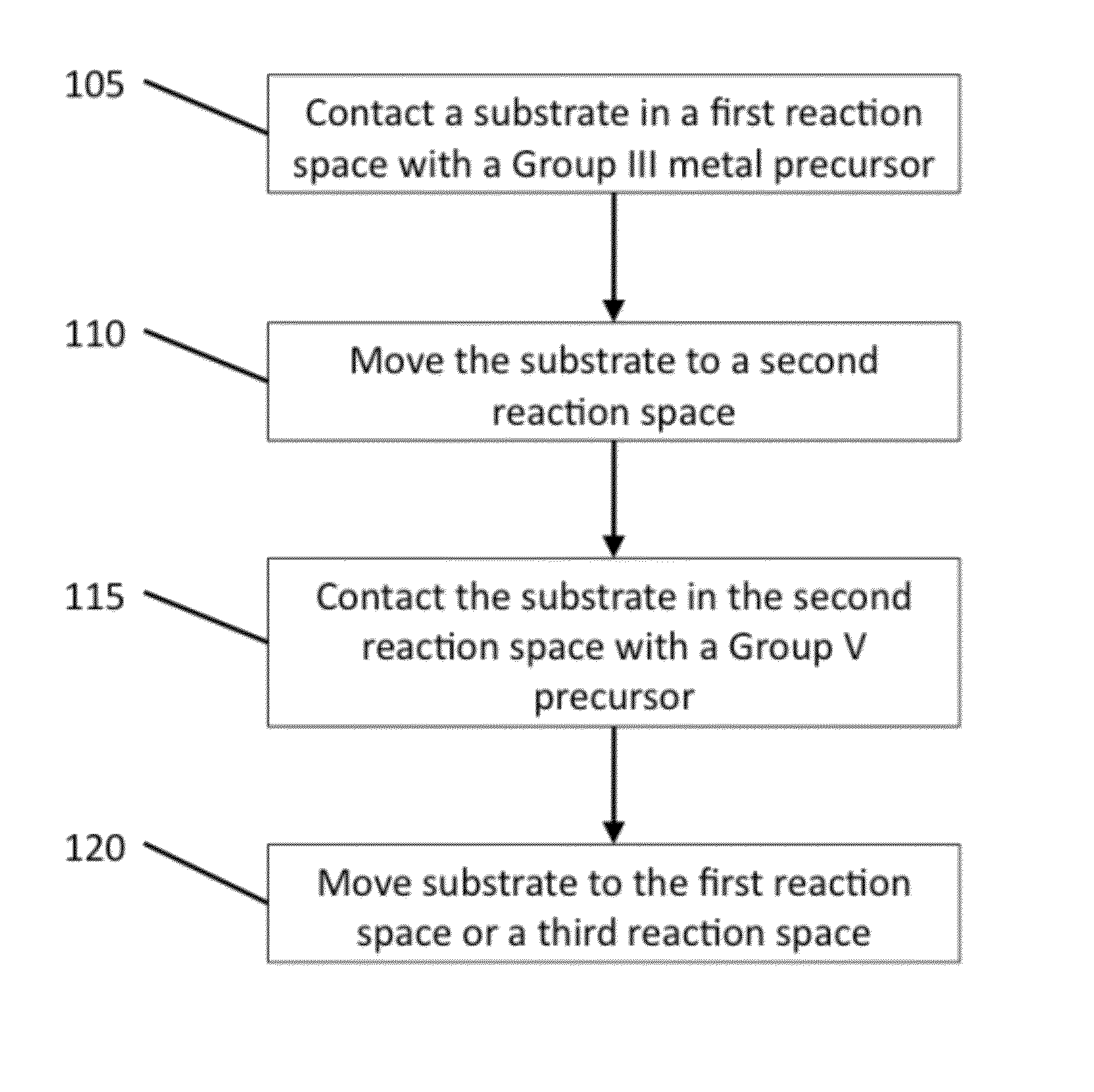Methods and systems for forming thin films
a technology of thin films and systems, applied in the direction of crystal growth process, crystal growth process, crystal growth process, etc., can solve the problems of complex reactor design, limited application range, and limited application range of current methods
- Summary
- Abstract
- Description
- Claims
- Application Information
AI Technical Summary
Benefits of technology
Problems solved by technology
Method used
Image
Examples
example
[0081]A system, such as the system of FIG. 2, includes four reaction spaces disposed in relation to one another adjacently along a circumference. A substrate, heated to a temperature of about 700° C., is provided in a first reaction space and contacted with trimethylgallium at a pressure of about 0.5 Torr. The first exposure of trimethylgallium is sufficient to form a gallium thin film at a coverage of about 0.5 ML. Next, the substrate, heated to a temperature of about 700° C., is rotated to a second reaction space and contacted with excited hydrogen-containing species, including hydrogen radicals and ions, at a pressure of about 0.5 Torr. Excited hydrogen-containing species are formed by providing plasma power of about 500 Watts to H2. Next, the substrate, heated to a temperature of about 700° C., is rotated to a third reaction space and contacted with a mixture of N2 and H2, at a pressure of about 0.5 Torr. Plasma power of about 500 Watts is provided to the mixture to generate exc...
PUM
| Property | Measurement | Unit |
|---|---|---|
| height | aaaaa | aaaaa |
| root mean square of height | aaaaa | aaaaa |
| pressure | aaaaa | aaaaa |
Abstract
Description
Claims
Application Information
 Login to View More
Login to View More - R&D
- Intellectual Property
- Life Sciences
- Materials
- Tech Scout
- Unparalleled Data Quality
- Higher Quality Content
- 60% Fewer Hallucinations
Browse by: Latest US Patents, China's latest patents, Technical Efficacy Thesaurus, Application Domain, Technology Topic, Popular Technical Reports.
© 2025 PatSnap. All rights reserved.Legal|Privacy policy|Modern Slavery Act Transparency Statement|Sitemap|About US| Contact US: help@patsnap.com



